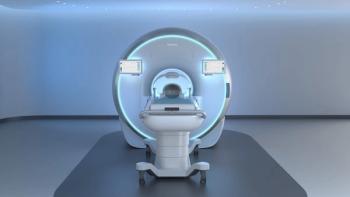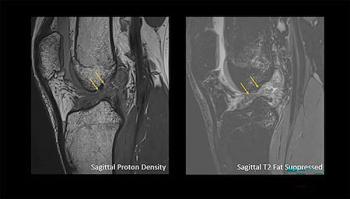
3T MR articular cartilage maps prove their worth
With the incidence of arthritis and other musculoskeletal diseases set to double in the next two decades, clinicians will welcome new quantitative 3T MRI strategies for assessing cartilage and chondral lesions.
With the incidence of arthritis and other musculoskeletal diseases set to double in the next two decades, clinicians will welcome new quantitative 3T MRI strategies for assessing cartilage and chondral lesions.
Two approaches have shown progress, said Dr. Bruce Forster, an associate professor of radiology at the University of British Columbia in Vancouver. One involves T2 mapping sequences that can evaluate the integrity and orientation of a collagen network. The other is a T1/T2 delayed gadolinium-enhanced MRI of cartilage (dGEMRIC). It is sensitive to changes in the proteoglycan content of cartilage, he said.
A multicenter study by European researchers demonstrated that T2 mapping performed on a 3T scanner can monitor the success of autologous cartilage transplantation (Invest Radiol 2007;42[6]:442-448). A separate study by Finnish researchers concluded that the combination of T2 mapping and T2 dGEMRIC imaging may be better than either approach alone for tracking cartilage repair (Osteoarthritis Cartilage 2007;15[4]:372-378).
"Our lab is assessing a commercial product for its utility in cartilage imaging, which can be read quickly and easily coregistered with anatomic images." Forster said.
Newsletter
Stay at the forefront of radiology with the Diagnostic Imaging newsletter, delivering the latest news, clinical insights, and imaging advancements for today’s radiologists.




























